Hedgerows are extremely helpful plantings that may present meals, privateness and wildlife habitats. We lately planted a hedgerow in our pasture to extend biodiversity & safety and to supply shelter & forage. Listed here are all the main points and a full record of the crops we included!
Hedgerows have a protracted historical past of use, significantly within the U.Ok., the place they have been generally planted to separate fields. However, hedgerows shouldn’t be reserved only for these stunning historic farms!
It’s time for hedgerows to make a come-back!
Which is precisely why I knew that our property wanted a hedgerow – one thing I’ve wished for years! And, after some lengthy days of planning and planting, my hedgerow desires are lastly coming true!
We lately planted a 170-ft hedgerow border alongside our horse pasture. However, earlier than we get into the main points of our hedgerow, let’s speak about why everybody ought to have a hedgerow, whether or not huge or small!
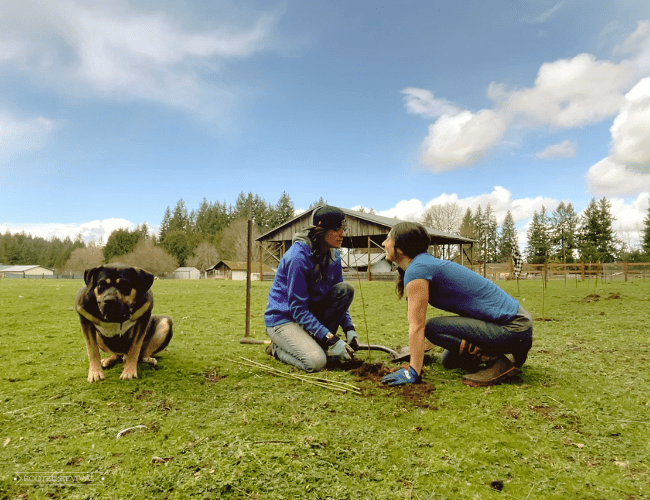

Hedgerows, by the best definition, are a dwelling fence. It’s an intensive planting technique that makes use of naturally suckering or spreading shrubs and low timber to create a densely planted border. That is used as a barrier to separate fields and different areas. Hedgerows often make the most of a wide range of plant species, from herbs and forbs to small timber and shrubs.
Hedgerows present the fundamental perform of making a barrier for fields and animals. However they supply a lot extra than simply that! They supply shelter and forage for wildlife, birds, pollinators and helpful bugs. There are monumental advantages of offering habitats to a majority of these creatures! In reality, research have proven that hedgerows dramatically enhance the quantity of predatory bugs. And people advantages may even lengthen lots of of toes! (Take a look at this study or this article for more information!)
However there are nonetheless extra advantages! Hedgerows present superb wind breaks and shelters. The expansion may even present shade. This reduces the general temperature of the house, making it extra appropriate for crops, animals and folks. The plant roots assist stabilize soil, scale back compaction and shield topsoil from from erosion.
A dwelling fence additionally helps shield pure sources (lumber) that might in any other case be used to create the fence. The hedgerow crops present us with clear, wholesome air! And, they supply privateness and assist block/scale back noises.
Oh, and don’t neglect that the majority hedgerow crops additionally present natural, medicinal and edible merchandise! Foraging among the many hedgerows was as soon as a standard observe! Plus, a hedgerow can present ample wooden for kindling, basket weaving and even waddle fencing! Simply take into consideration what number of superb sources we misplaced because the hedgerow’s reputation declined.
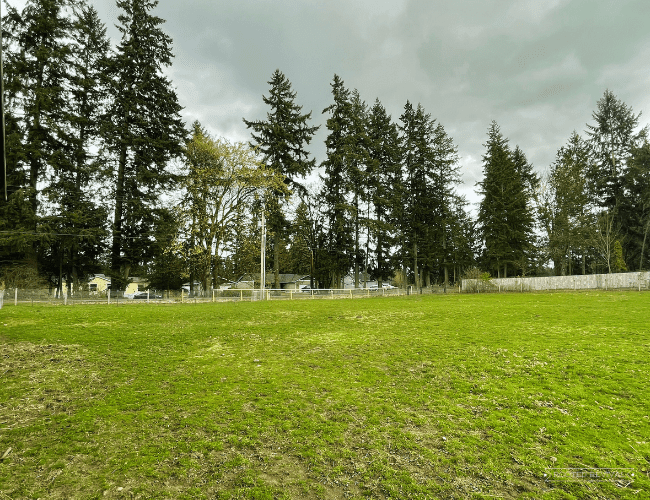

At any time when I start designing a polyculture/guild or some other panorama design, I begin with our targets. This enables me to have a really clear deal with which crops will assist the general need of the design. It makes deciding on crops for the realm a lot simpler!
Whereas every plant might not meet the entire targets, it’s ultimate for every of the crops to satisfy as many as attainable. This can be a nice utility of the permaculture precept that every factor in your permaculture methods ought to carry out as many capabilities as attainable.
For this design, I began with the next targets in thoughts:
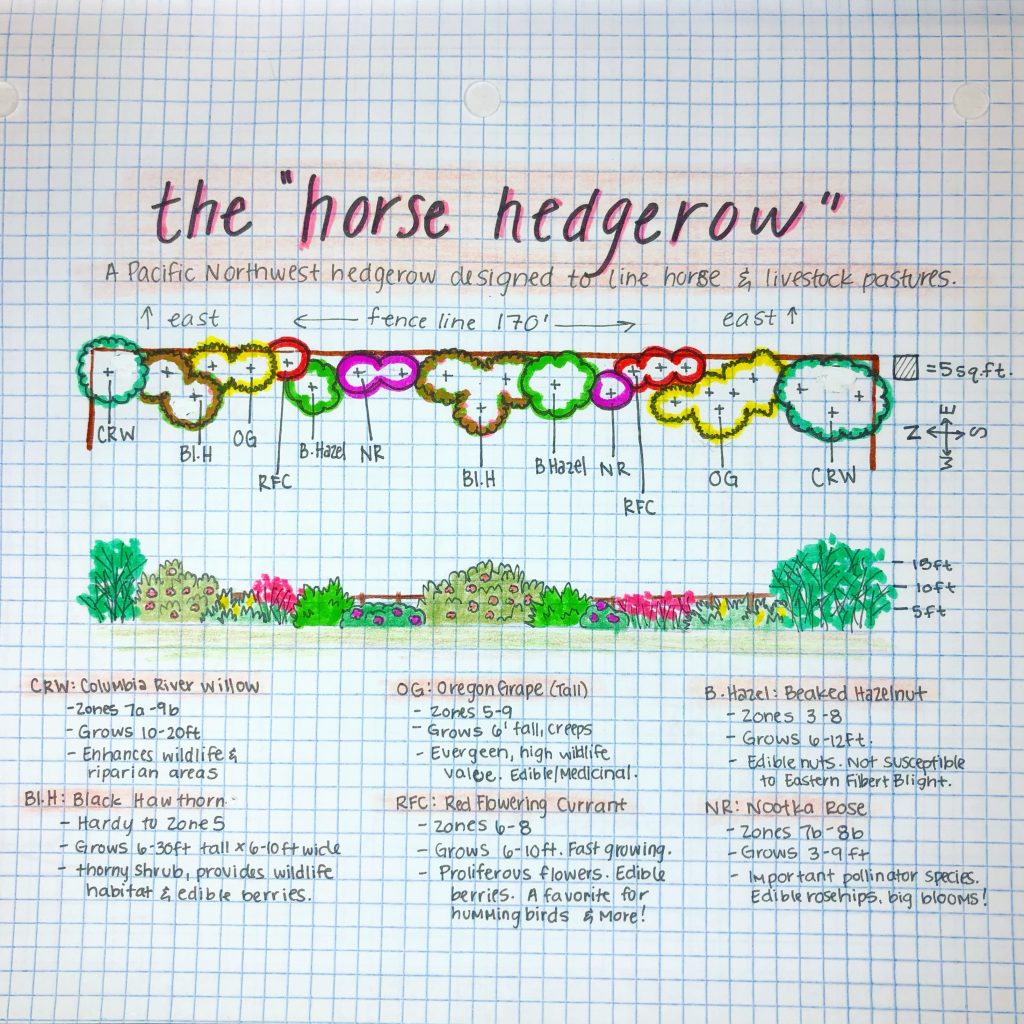

I’ve been planning this hedgerow for over a yr. (You’ll be able to see the unique design idea above.) It turned a actuality In March of 2022! And let me inform you, I’m so excited to see this hedgerow take off and begin filling in over the following few years!
To start, we marked out our hedgerow space. The hedgerow will line the jap border of our 1-acre horse pasture. The precise hedgerow house is about 10 toes in width by 170 toes in size.
The livestock that use this pasture embrace our two mini horses and our two haflinger horses. They rotate between this pasture and our different pastures. The milk goats additionally often graze on this pasture… principally after they escape from their very own pasture! And, after all, the free vary chickens go wherever they need!
Clearly, we are able to’t enable the livestock to have full entry to the hedgerow as a result of they’d devour it earlier than the crops have an opportunity to determine. So, we created a short lived fence line to surround the realm.
We used t-posts and stretched woven wire fencing alongside it. We left a gap in one of many panels in order that we are able to go into the fenced space when wanted to keep up the crops and weed eat the grass progress.
The wire fence will shield the crops from the goats and horses whereas they get established. We additionally plan to string a line of electro-braid sizzling fence alongside the highest. This may assist deter the horses from pushing towards the fence in an effort to achieve the crops. Our haflinger horses are infamous for destroying fences by leaning on them!


We bought the vast majority of the crops from our conservation district’s annual native plant sale. I used to be so impressed by the standard of the crops! Whereas they’re younger crops, these varieties are all quick growers, so it received’t take lengthy to fill within the house!
Since a lot of the plant have been bought by the native plant sale (apart from hawthorn cuttings we took from our different hawthorn timber), they have been all delivered in early March. We planted them just a few weeks later, in mid-March.
This was ultimate as a result of they have been all naked roots, that are most ideally planted in the course of the cool season (late winter into early spring). This enables the crops time to get established whereas they’re nonetheless dormant or semi-dormant.
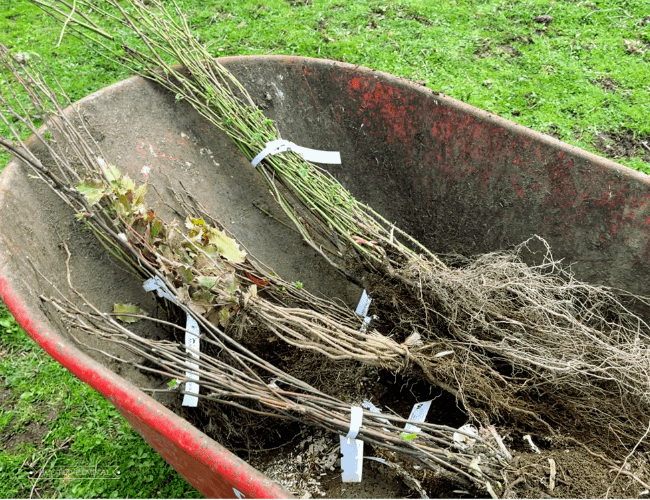

Since hedgerows have largely fallen out of vogue within the US, most of my analysis was primarily based on the livestock hedgerows used within the UK. And the UK is really the authority in relation to hedgerows anyhow!
As soon as I had a greater understanding of hedgerows, I got down to adapt the normal plant species to ones that might thrive and survive within the local weather of the Pacific Northwest. I additionally wished to make use of as many native species as attainable.
Beneath are the species that we determined to initially incorporate into our hedgerow. We’ll in all probability adapt and add to those species over time. So I’ll attempt to replace this publish as we accomplish that!
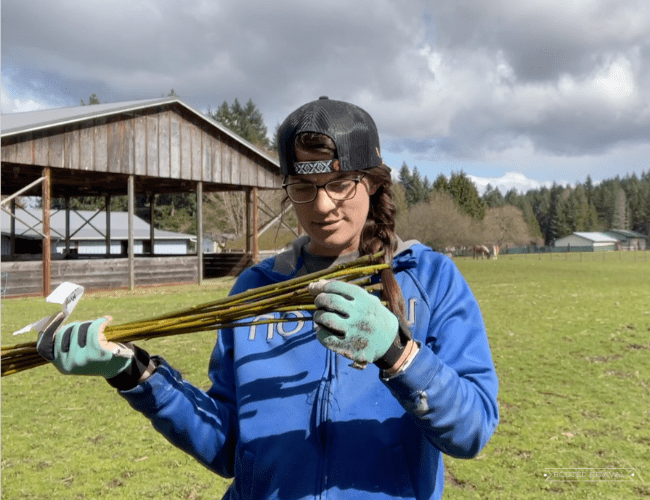

*Word: I’m combining these two varieties as a result of they’re very related
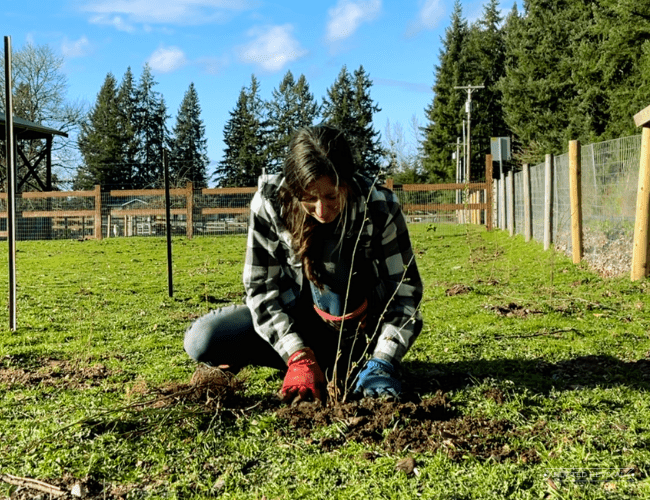

*We now have additionally included salmonberry and thimbleberry that are Pacific Northwest Natives much like the black cap raspberry. You’ll find extra information about them right here:
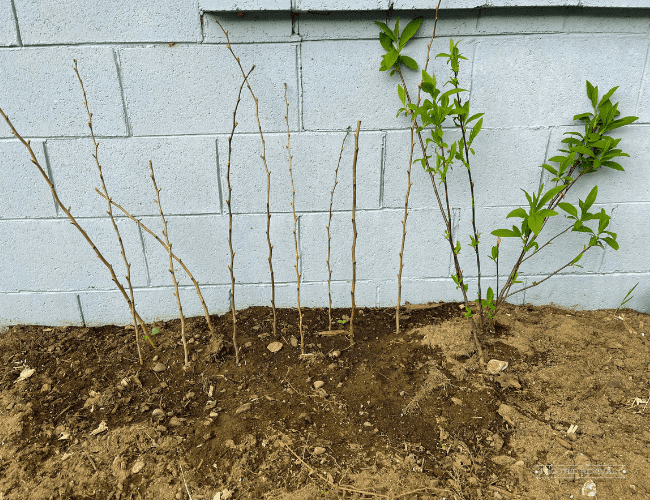

I additionally bought and planted some gooseberries within the horse pasture hedgerow. Nevertheless, I’m fascinated about eradicating them and planting them elsewhere.
I’ve at all times been conscious of the truth that they include cyanide. Nevertheless, I’ve at all times considered them as comparatively secure until consumed in loopy excessive quantities. That was, till I learn this article which accommodates fairly the cautionary story!
We now have just a few gooseberries in different components of our property. However I’ve but to style a single gooseberry as a result of our chickens eat the entire berries earlier than they ever ripen! We’ve by no means had any well being points from this. Nevertheless, a horse may be very completely different from a rooster and I don’t need to take any pointless dangers with their well being.
I’d love to listen to if anybody has expertise with gooseberries in or round their livestock pens. There’s little or no data accessible on this matter and I feel it’s an vital one to discover! Please let me know your ideas and experiences within the feedback!
Pin this publish so that you don’t neglect it!
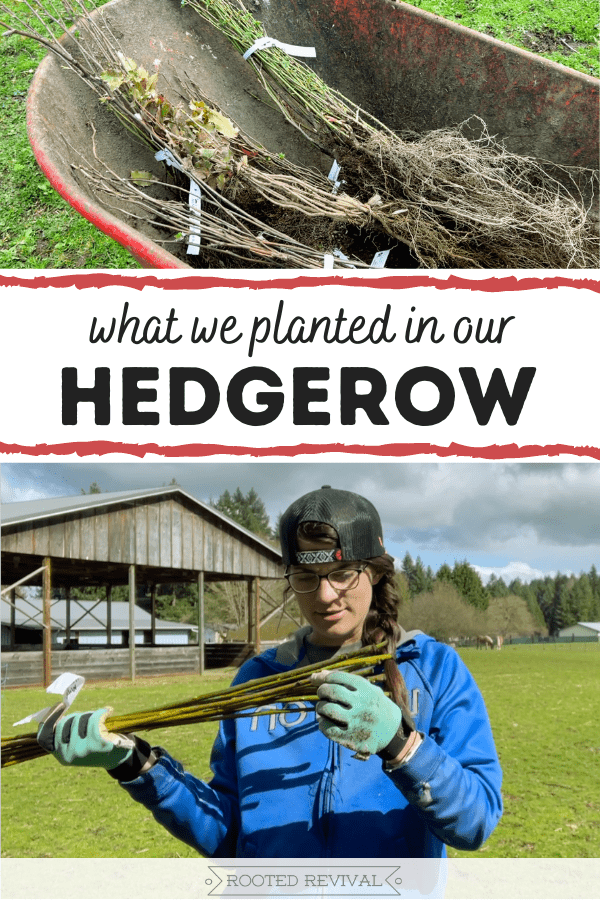

Hedgerows have a protracted historical past of use, significantly within the U.Ok., the place they have been generally planted to separate fields. However, hedgerows shouldn’t be reserved only for these stunning historic farms!
It’s time for hedgerows to make a come-back!
Which is precisely why I knew that our property wanted a hedgerow – one thing I’ve wished for years! And, after some lengthy days of planning and planting, my hedgerow desires are lastly coming true!
We lately planted a 170-ft hedgerow border alongside our horse pasture. However, earlier than we get into the main points of our hedgerow, let’s speak about why everybody ought to have a hedgerow, whether or not huge or small!


What are hedgerows?
Hedgerows, by the best definition, are a dwelling fence. It’s an intensive planting technique that makes use of naturally suckering or spreading shrubs and low timber to create a densely planted border. That is used as a barrier to separate fields and different areas. Hedgerows often make the most of a wide range of plant species, from herbs and forbs to small timber and shrubs.
Advantages of Hedgerows
Hedgerows present the fundamental perform of making a barrier for fields and animals. However they supply a lot extra than simply that! They supply shelter and forage for wildlife, birds, pollinators and helpful bugs. There are monumental advantages of offering habitats to a majority of these creatures! In reality, research have proven that hedgerows dramatically enhance the quantity of predatory bugs. And people advantages may even lengthen lots of of toes! (Take a look at this study or this article for more information!)
However there are nonetheless extra advantages! Hedgerows present superb wind breaks and shelters. The expansion may even present shade. This reduces the general temperature of the house, making it extra appropriate for crops, animals and folks. The plant roots assist stabilize soil, scale back compaction and shield topsoil from from erosion.
A dwelling fence additionally helps shield pure sources (lumber) that might in any other case be used to create the fence. The hedgerow crops present us with clear, wholesome air! And, they supply privateness and assist block/scale back noises.
Oh, and don’t neglect that the majority hedgerow crops additionally present natural, medicinal and edible merchandise! Foraging among the many hedgerows was as soon as a standard observe! Plus, a hedgerow can present ample wooden for kindling, basket weaving and even waddle fencing! Simply take into consideration what number of superb sources we misplaced because the hedgerow’s reputation declined.


Our Hedgerow Objectives
At any time when I start designing a polyculture/guild or some other panorama design, I begin with our targets. This enables me to have a really clear deal with which crops will assist the general need of the design. It makes deciding on crops for the realm a lot simpler!
Whereas every plant might not meet the entire targets, it’s ultimate for every of the crops to satisfy as many as attainable. This can be a nice utility of the permaculture precept that every factor in your permaculture methods ought to carry out as many capabilities as attainable.
For this design, I began with the next targets in thoughts:
- Create a pure border alongside jap perimeter of our livestock pasture
- Enhance biodiversity by utilizing native species to assist native birds, bugs and different wildlife
- Make the most of native crops that match our soil sort and atmosphere for simpler care and decrease upkeep. Should be capable of deal with a protracted moist season in addition to a summer season drought season.
- Offers shelter and shade for livestock
- Enhance the safety of our fence line
- Present privateness from the street and homes that border the fence line
- Plant varieties that may present extra yields (nuts, fruit, lumber, dye, berries, and so forth.) needs to be given additional consideration.
- Offers livestock extra pure grazing choices by a mixture of forbs, herbs, shrubs, timber, and so forth.
- All varieties should be livestock secure because the horses and goats will probably be nibbling and shopping the crops.
Wish to see the method of planting our hedgerow?
Check out our vlog about it on YouTube!


Making ready for our Hedgerow:
I’ve been planning this hedgerow for over a yr. (You’ll be able to see the unique design idea above.) It turned a actuality In March of 2022! And let me inform you, I’m so excited to see this hedgerow take off and begin filling in over the following few years!
To start, we marked out our hedgerow space. The hedgerow will line the jap border of our 1-acre horse pasture. The precise hedgerow house is about 10 toes in width by 170 toes in size.
The livestock that use this pasture embrace our two mini horses and our two haflinger horses. They rotate between this pasture and our different pastures. The milk goats additionally often graze on this pasture… principally after they escape from their very own pasture! And, after all, the free vary chickens go wherever they need!
Fencing
Clearly, we are able to’t enable the livestock to have full entry to the hedgerow as a result of they’d devour it earlier than the crops have an opportunity to determine. So, we created a short lived fence line to surround the realm.
We used t-posts and stretched woven wire fencing alongside it. We left a gap in one of many panels in order that we are able to go into the fenced space when wanted to keep up the crops and weed eat the grass progress.
The wire fence will shield the crops from the goats and horses whereas they get established. We additionally plan to string a line of electro-braid sizzling fence alongside the highest. This may assist deter the horses from pushing towards the fence in an effort to achieve the crops. Our haflinger horses are infamous for destroying fences by leaning on them!


Buying crops
We bought the vast majority of the crops from our conservation district’s annual native plant sale. I used to be so impressed by the standard of the crops! Whereas they’re younger crops, these varieties are all quick growers, so it received’t take lengthy to fill within the house!
Since a lot of the plant have been bought by the native plant sale (apart from hawthorn cuttings we took from our different hawthorn timber), they have been all delivered in early March. We planted them just a few weeks later, in mid-March.
This was ultimate as a result of they have been all naked roots, that are most ideally planted in the course of the cool season (late winter into early spring). This enables the crops time to get established whereas they’re nonetheless dormant or semi-dormant.


Deciding on Plant Varieties for our Hedgerow
Since hedgerows have largely fallen out of vogue within the US, most of my analysis was primarily based on the livestock hedgerows used within the UK. And the UK is really the authority in relation to hedgerows anyhow!
As soon as I had a greater understanding of hedgerows, I got down to adapt the normal plant species to ones that might thrive and survive within the local weather of the Pacific Northwest. I additionally wished to make use of as many native species as attainable.
Beneath are the species that we determined to initially incorporate into our hedgerow. We’ll in all probability adapt and add to those species over time. So I’ll attempt to replace this publish as we accomplish that!
Midland (English) Hawthorn (Crataegus laevigata)
- Plant sort: A quick rising deciduous shrub (or may be pruned right into a small tree). Fashionable for hedgerows due to its spreading and thicketing habits together with its spiny thorns. The shrub produces pink blossoms within the spring and pink berries that ripen in late fall. Unfold needs to be managed and contained to hedgerow to stop it from escaping cultivation.
- Zones: 4-8
- Soil: Appropriate for a wide range of soil sorts (from clay to sand and barely acidic to alkaline soils). Prefers moist soils however can deal with intervals of drought.
- Gentle: Full solar to full shade
- Components used: leaves, flower, berries
- Advantages:
- Can be utilized medicinally in people and animals and has a really lengthy and secure historical past of use as a coronary heart tonic.
- Massive thorns assist shield fence line, each to include horses and preserve predators at bay.
- Vasodilator: will increase blood circulate and helps enhance circulation. That is particularly nice for senior horses, horses with arthritis and horses with navicular illness and laminitis.
- Antioxidant: berries are excessive in antioxidants that are cardio-protective and assist scale back free radical injury,
- Berries are excessive in pectin, making them ultimate for jams and jellies
- Offers shelter for birds
- References & sources:
Pacific Willow (Salix lucida)
- Plant sort: Deciduous shrub/tree, one of many tallest PNW native willows at 15-45 ft.
- Zones: 3-9
- Soil: Prefers moist to damp soils which are sandy & unfastened
- Gentle: Full solar to half shade
- Components used: leaves, bark
- Advantages:
- Can be utilized medicinally in people and animals.
- Anti-inflammatory properties will help scale back irritation. That is particularly useful in senior horses that have arthritis or laminitis. Many pure horse practitioners use willow bark as a substitute for Bute and aspirin since it’s extra mild on the digestive system.
- As soon as established, the tree may be pruned frequently. Younger branches can be utilized for a wide range of functions together with basket weaving, wattle fencing and decorative wreaths.
- May also help scale back erosion, particularly in wetlands
- Offers wind block and wildlife shelter
- References & sources:


Nootka rose (Rosa nutkana) & Peafruit rose (Rosa pisocarpa)
*Word: I’m combining these two varieties as a result of they’re very related
- Plant sort: flowering deciduous shrub; sends out suckers, making it a really perfect hedging plant
- Zones: 7b – 8b
- Soil: Properly-drained. Prefers moist soils bu can deal with dry intervals
- Gentle: Prefers sunny areas (Baldhip rose – additionally native – does higher in shaded areas)
- Components used: hips
- Advantages:
- Plats reproduce shortly from rhizomes and can be utilized as a pioneer species to reforest areas and stabilize banks.
- Necessary meals supply for native bugs and pollinators.
- Nootka produces massive hips. Peafruit produces hips, however they’re usually smaller in dimension.
- Rosehips are very excessive in Vitamin C and are utilized in natural medication for each people and animals.
- Hips are helpful in boosting immunity, lowering irritation and enhancing hair and pores and skin
- Massive solitary flowers with pale to darkish pink flowers encourage native pollinators
- References & sources:
Tall Oregon Grape (Mahonia aquifolium)
- Plant sort: Evergreen shrub. Varieties embrace: tall (Mahonia aquifolium), Cascade/long-leaf (Mohinia nervosa) and low/creeping (Mahonia reopens).
- Zones: 5-9
- Soil: Barely moist, well-drained acidic soil
- Gentle: Full solar to shade
- Components used: Berries, roots
- Advantages:
- Very helpful to native wildlife, birds and bugs.
- Brilliant yellow early spring flowers present early season meals supply for pollinators.
- Antibiotic and antiviral properties for people and livestock
- Anti-inflammatory
- Helps liver and kidney perform
- Non-toxic to horses & livestock however shouldn’t be consumed frequently in massive quantities
- References & sources:


Crimson flowering currant (Ribes sanguineum)
- Plant sort: Deciduous shrub
- Zones: 6-8
- Soil: Properly drained. Drought-tolerant as soon as established.
- Gentle: Full solar to half shade
- Advantages:
- Produces proliferous flowers and berries. Necessary for pollinators, birds, bugs. A favourite of hummingbirds.
- Thicketing habits happens over time.
- Deer resistant.
- Berries are edible however not tasty – birds get pleasure from them although!
- Flowers can be utilized in teas
- Not significantly tasty to livestock, but in addition not poisonous
- References & sources:
Black cap raspberry (Rubus leucodermis)
- Plant sort: Perennial berry plant
- Zones: 4-8
- Soil: Can develop in most soil sorts however prefers well-drained loamy soils
- Gentle: Full solar to half shade
- Components used: Leaves and berries
- Advantages:
- Leaves are an ideal medicinal complement for livestock and people.
- Raspberry leaves are nice for pregnant goats and different livestock as they assist wholesome uterine ripening in preparation for start.
- Leaves are excessive in nutritional vitamins and minerals to assist a wholesome immune system.
- Raspberry leaves can be utilized to assist regulate hormone ranges in moody mare horses.
- Edible berries are a secure deal with for animals and an ideal deal with for people too!
- Thorny canes and quick rising nature helps create a barrier
- References & sources:
*We now have additionally included salmonberry and thimbleberry that are Pacific Northwest Natives much like the black cap raspberry. You’ll find extra information about them right here:


Gooseberry
I additionally bought and planted some gooseberries within the horse pasture hedgerow. Nevertheless, I’m fascinated about eradicating them and planting them elsewhere.
I’ve at all times been conscious of the truth that they include cyanide. Nevertheless, I’ve at all times considered them as comparatively secure until consumed in loopy excessive quantities. That was, till I learn this article which accommodates fairly the cautionary story!
We now have just a few gooseberries in different components of our property. However I’ve but to style a single gooseberry as a result of our chickens eat the entire berries earlier than they ever ripen! We’ve by no means had any well being points from this. Nevertheless, a horse may be very completely different from a rooster and I don’t need to take any pointless dangers with their well being.
I’d love to listen to if anybody has expertise with gooseberries in or round their livestock pens. There’s little or no data accessible on this matter and I feel it’s an vital one to discover! Please let me know your ideas and experiences within the feedback!
Pin this publish so that you don’t neglect it!




Kaylee is the Founding father of Rootedrevival.com. She has arrange and run two homesteads, a one-acre in Idaho, and her present two-acre dream homestead within the Pacific North West. Her {qualifications} embrace a Permaculture Design Certification from Oregon State College, and he or she is a Gardenary Licensed Backyard Coach. Kaylee presently produces a minimum of 80% of her personal meals. She contributes to our website by articles, coaching and training to our purchasers. You’ll be able to learn extra about her at rootedrevival.com/kaylee-vaughn
View all posts
